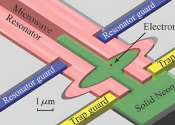Researchers demonstrate how to build 'time-traveling' quantum sensors
The idea of time travel has dazzled sci-fi enthusiasts for years. Science tells us that traveling to the future is technically feasible, at least if you're willing to go near the speed of light, but going back in time is ...









